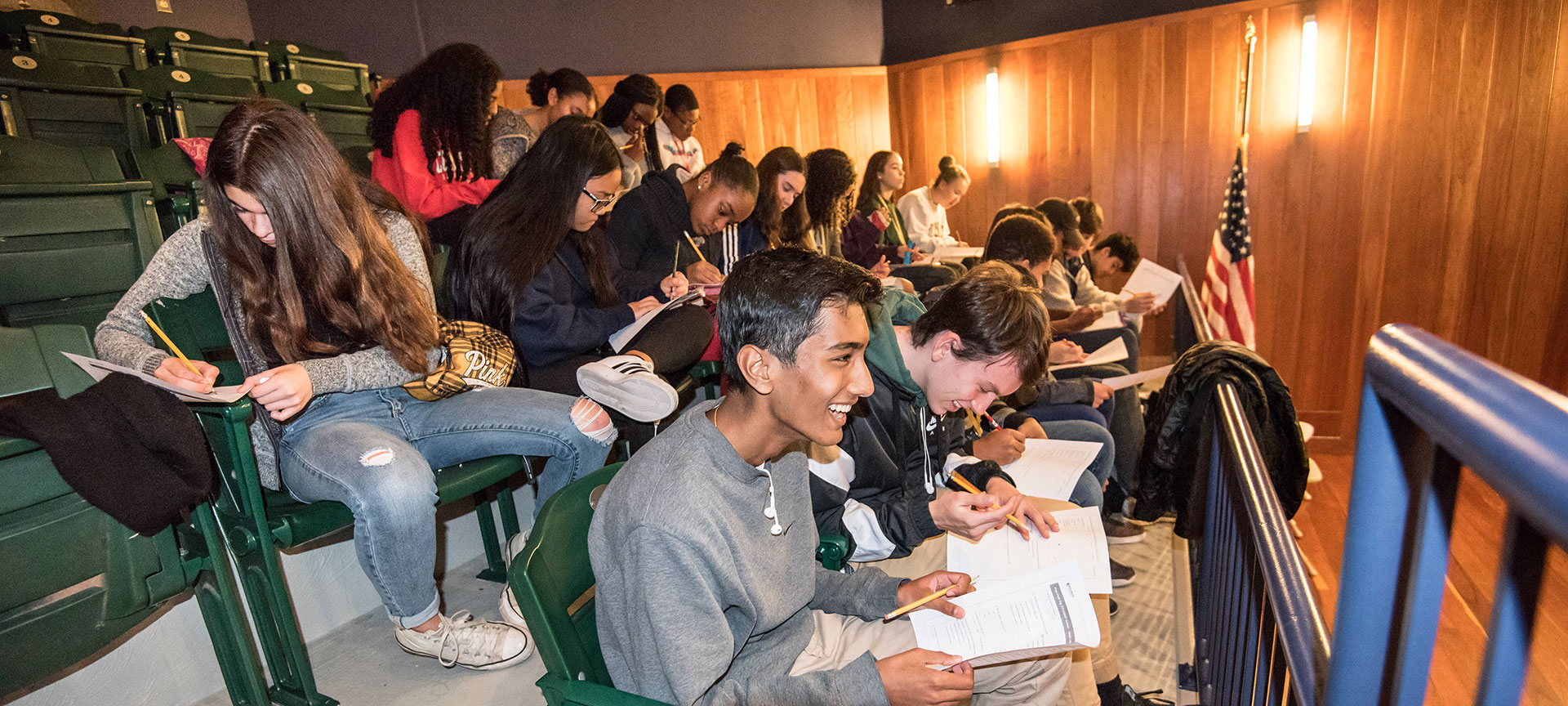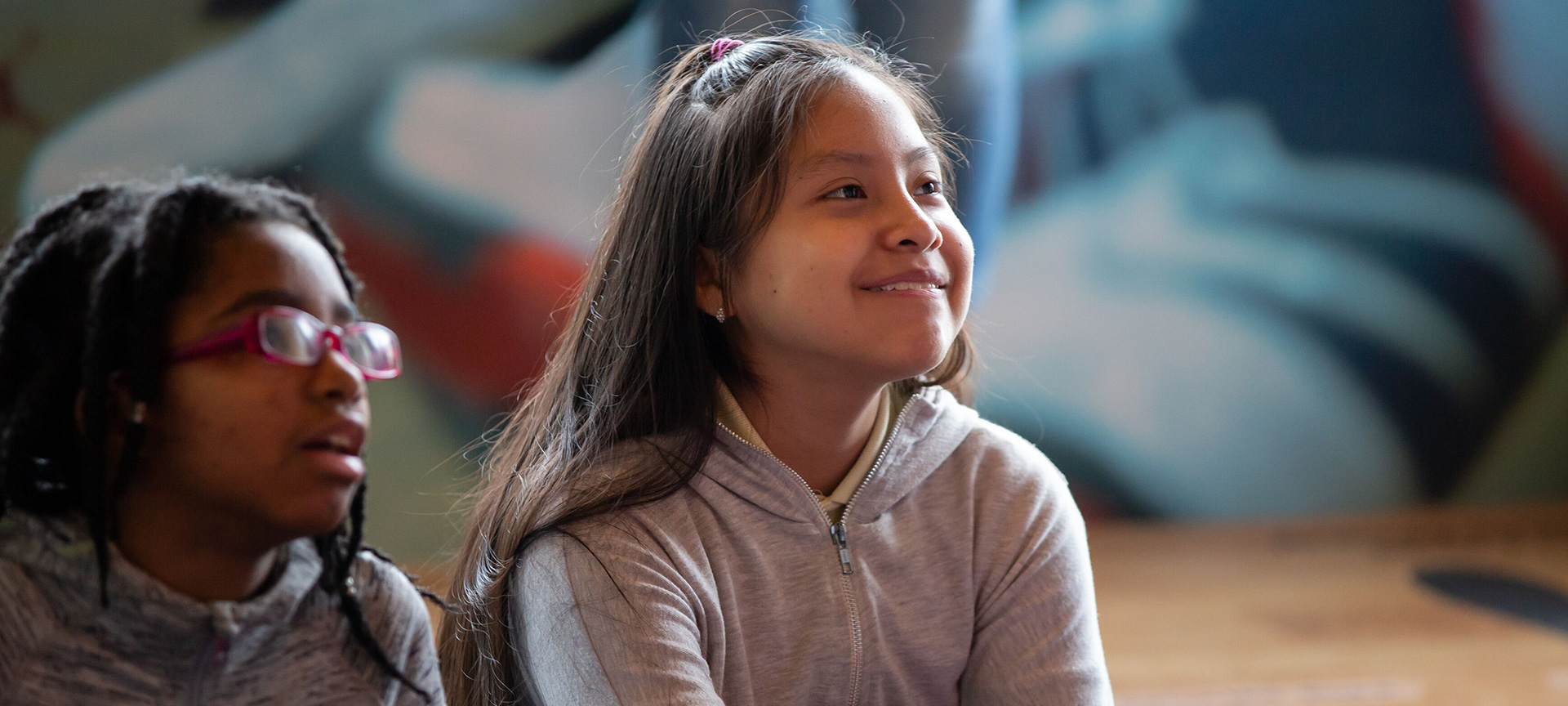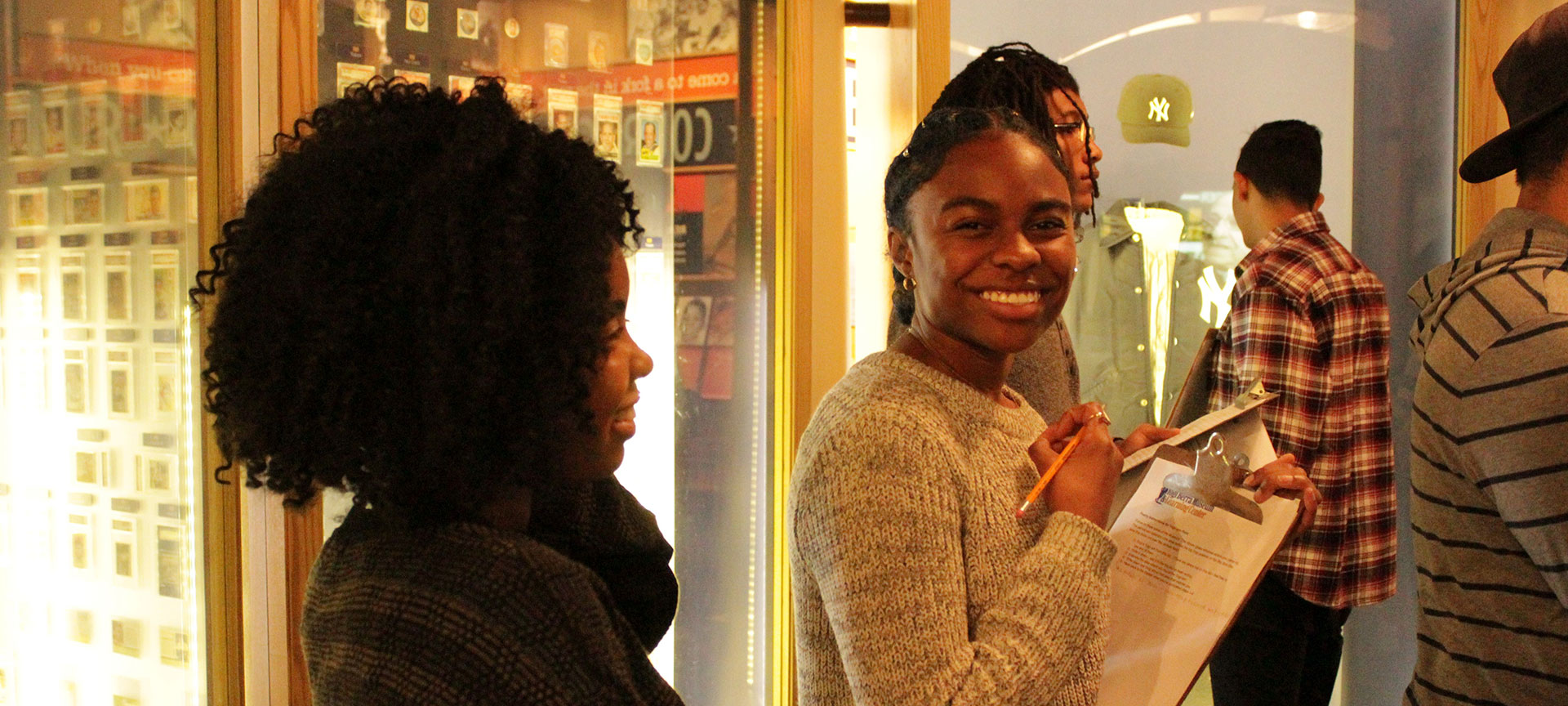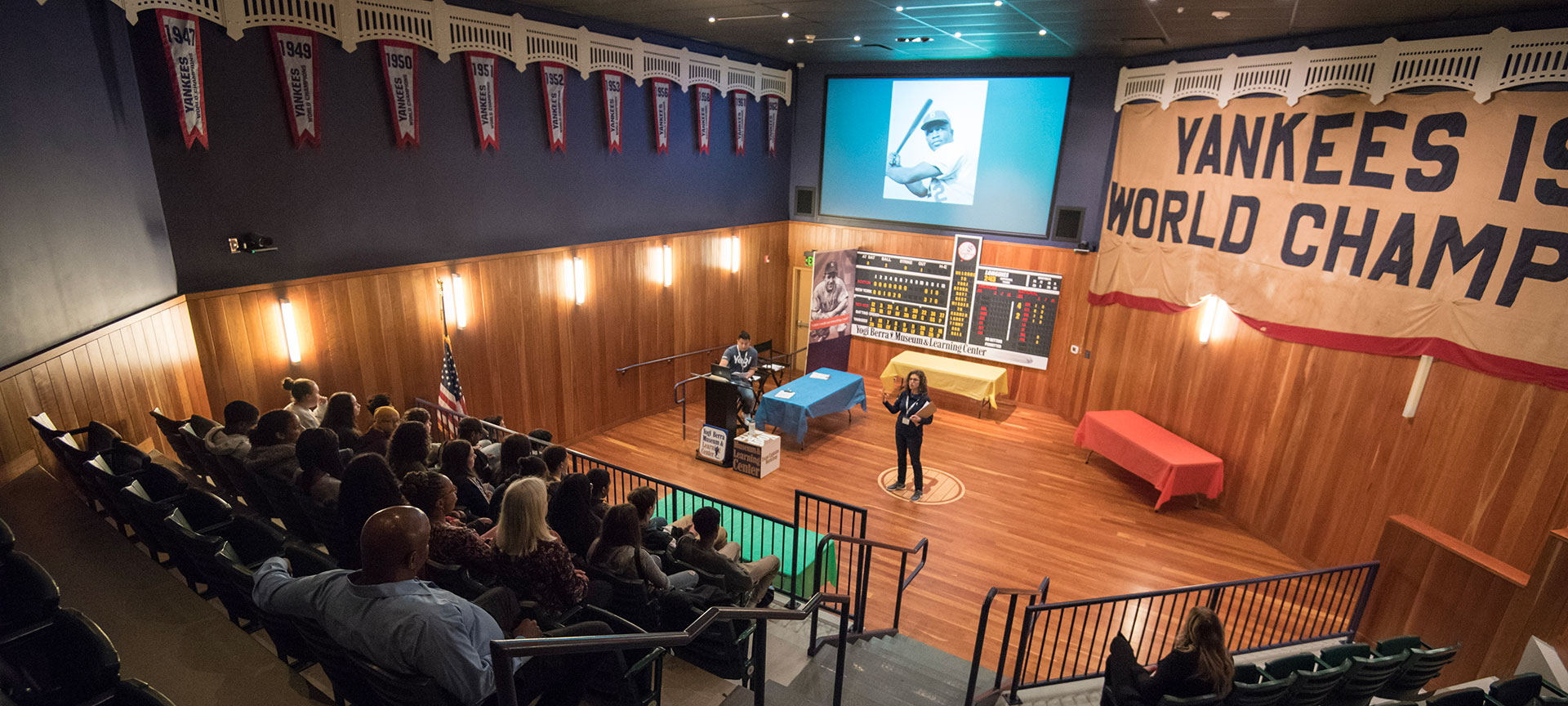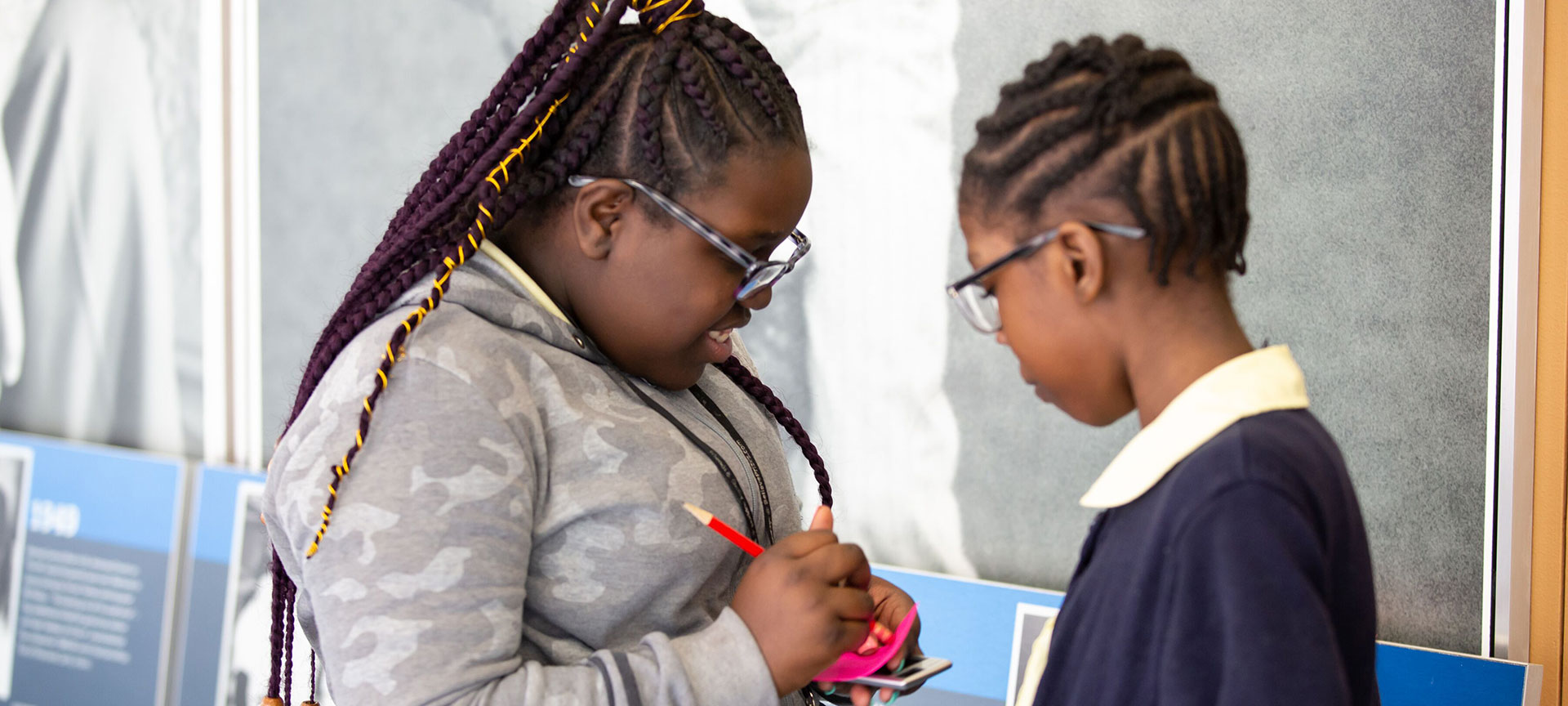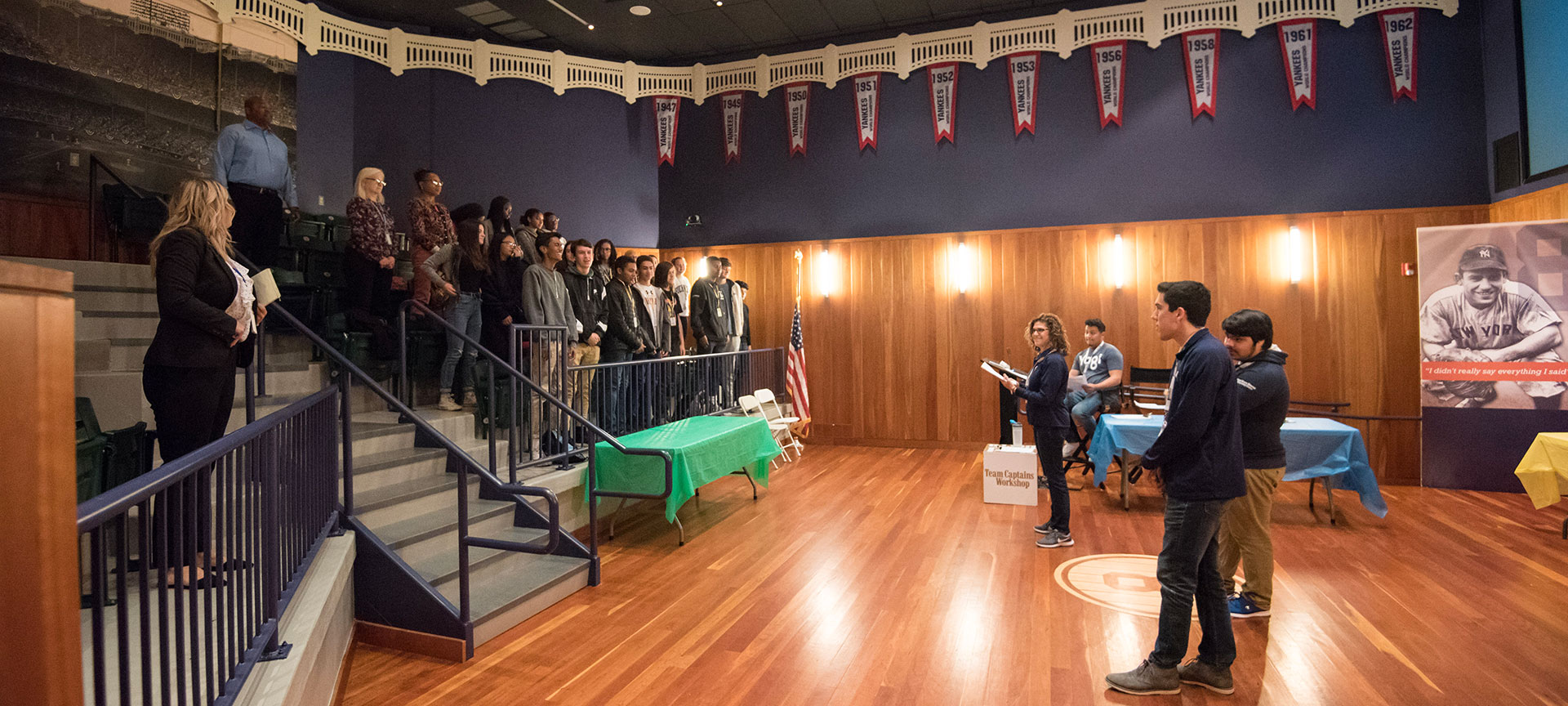Poetry, Spoken Word & Yogi-isms
A Lesson in Self-Identity Through Writing and Performance
Overview:
Inspired by Yogi Berra’s well-known playfulness with language, (or “Yogi-isms”), we connect kids to writing, poetry and spoken word through a journey of self-reflection and exploration of personal memories. The experience culminates in student performances of written work in our 65-seat stadium-style theater.
Key Terms:
Through various writing exercises, students develop an experiential knowledge of such terms as, Yogi-isms, memories, identity, stream of consciousness, details, specificity, imagery, tone, rhythm, language, revision, and work-in-progress.
Essential Questions:
- What does it mean to be “from” somewhere? In what ways do our experiences define who we are?
- What makes Yogi’s “Yogi-isms” memorable? How can they be interpreted differently by different people?
- How is imagery used in Amanda Gorman’s “The Hill We Climb” and JayZ’s and Alicia Keys’ “Empire State of Mind”?
Part 1 – “I Am From”
Motivational Activity:
In this activity, students generate a list of identity markers drawn from their personal experiences and memories. This list forms the basis for their composing a poem about identity.
Objectives:
Students will:
- Practice REWRITING in writing
- Learn about Yogi-isms and how to interpret their meanings
- Listen to works of poetry and rap, noticing detail, imagery, rhythm and language
- Create a work of poetry/spoken word
Part 2 – Yogi-isms
Students are given a list of Yogi-isms and explore parts of the Museum where Yogi-isms are displayed. In small groups, they discuss various interpretations of Yogi-isms, then add a Yogi-ism that resonates with them to their personal list of details, along with any thoughts or interpretations they have about the saying. For example, a student might pick “It ‘aint over til it’s over,” and write: “Don’t quit,” “Never give up,” or “Believe in yourself.”
Objectives:
Students will:
- Consider Yogi-isms as creative word play
- Discuss in small groups the various meanings that can be distilled from the sayings
- Add a Yogi-ism that is meaningful to them to their list of identity markers
Part 3 – Poetry & Rap
Students consider how to construct their own poetry/spoken word pieces, looking at examples from other artists. Examples include “The Hill We Climb” by Amanda Gorman, as well as works of rap from contemporary hip hop artists.
Objectives:
Students will:
- Listen to the poem “The Hill We Climb” by Amanda Gorman, paying attention to imagery, tone and word choice
- Listen to “Empire State of Mind” by Jay-Z and Alicia Keys, again paying close attention to the imagery, tone, language and rhythm
- Discuss images they remember from the two works
- Consider how they can use imagery and language to similar effect in their own poems
Essential Questions:
- How does word choice affect tone in a poem or rap?
- What emotions do the images in these works evoke? How do they make you feel?
- What role does rhythm play in the effect of these works?
Part 4 – Writing the First Draft
Armed with a written list of self-reflective details, Yogi-isms, imagery, emotions and rhythms, students are encouraged to find a spot in the Museum (away from their friends) where they sit and write for 15–20 minutes. They begin a first draft of a poem building on the phrase “I am from,” and incorporating memories and details from their lists. Yogi-isms can be used and “played with” just as Yogi himself played with words.
Part 5 – Share/Perform
Students volunteer to stand center stage in the Museum’s theater and perform their spoken word pieces. After each piece students discuss as a group what stood out to them about the piece in terms of images, phrases, words, Yogi-isms, etc.
Objectives:
Students will:
- Discuss pieces with peers
- Begin to think about next steps in the rewriting process
- Learn about each other
- Perform written pieces
Continued Activities For The Classroom:
- Have each student read their piece aloud and discuss how revisions could make the work stronger.
- Put students in groups of 2-3 to create performance pieces that combine their written pieces. For example, students can take turns reading from their respective works line by line, or jumble up all the writing together any way they choose. Have them experiment with reading the different combinations aloud to one another, and then write down a new combination piece.
- Begin to “stage” these combined pieces with simple movements or gestures. You might include costumes, props, technology, sound, music, etc.
- Give groups time to rehearse and preferably memorize their performance pieces.
- Perform these revised pieces (or combinations of pieces) for the whole class.
NJ State Standards
ELA-LITERACY.W.8.2.D. Writing, Grade 8
Use precise language and domain-specific vocabulary to inform about or explain the topic.
ELA-LITERACY.SL.9-10.1.C10. Speaking & Listening, Grade 9 & 10
Propel conversations by posing and responding to questions that relate the current discussion to broader themes or larger ideas; actively incorporate others into the discussion; and clarify, verify, or challenge ideas and conclusions.
English Language Arts, Grades 11 & 12
Reading (Craft & Structure)
NJSLSA.R6
Assess how point of view or purpose shapes the content and style of a text.
Production & Distribution of Writing
NJSLSA.W5
Develop and strengthen writing as needed by planning, revising, editing, rewriting, or trying a new approach.
NJSLSA.W6
Use technology, including the Internet, to produce and publish writing and to interact and collaborate with others.

